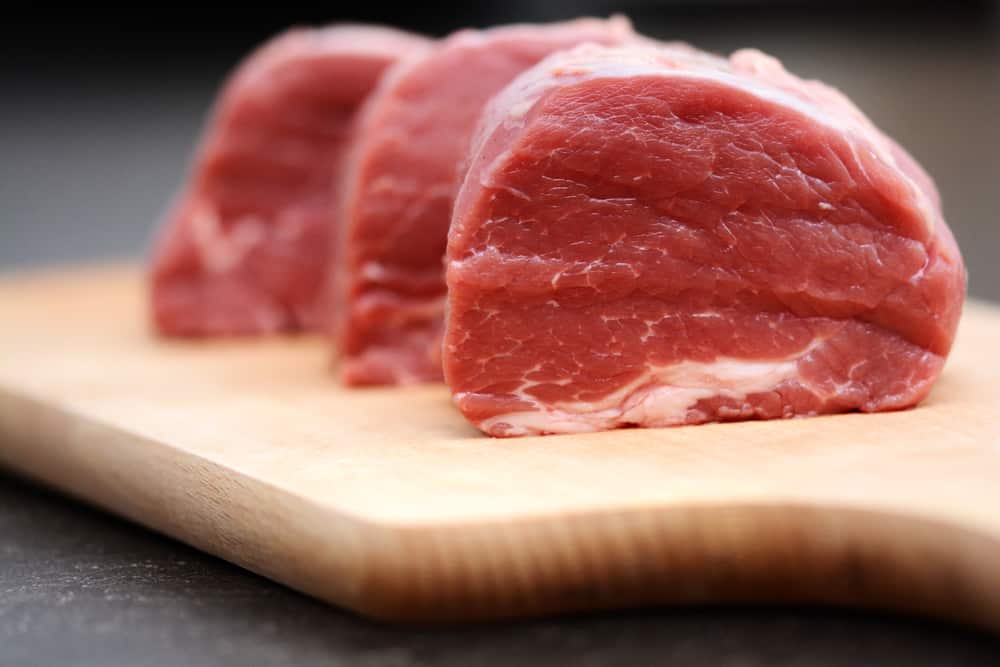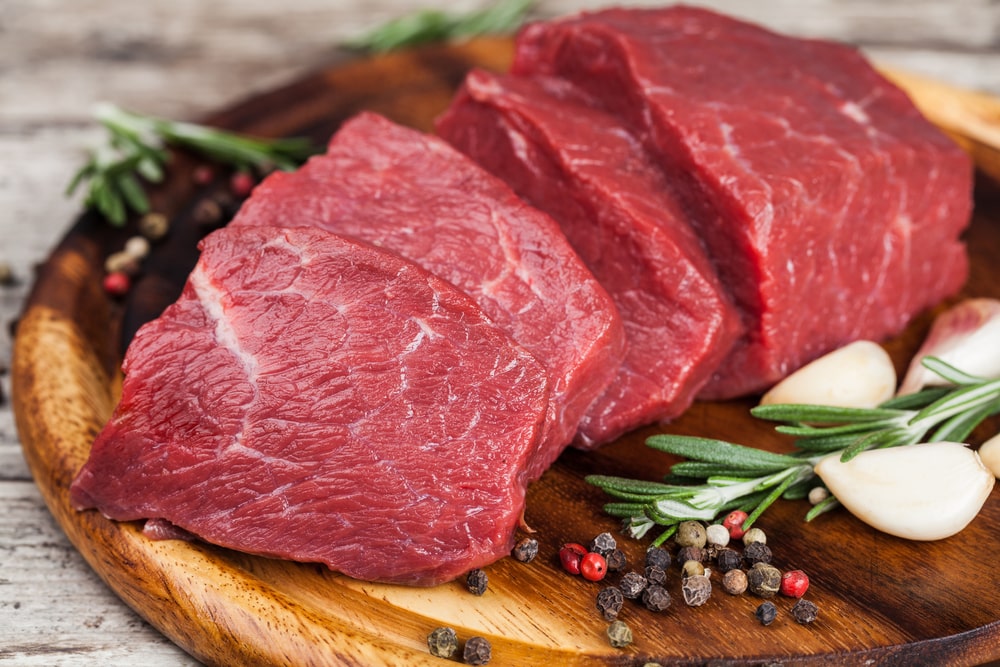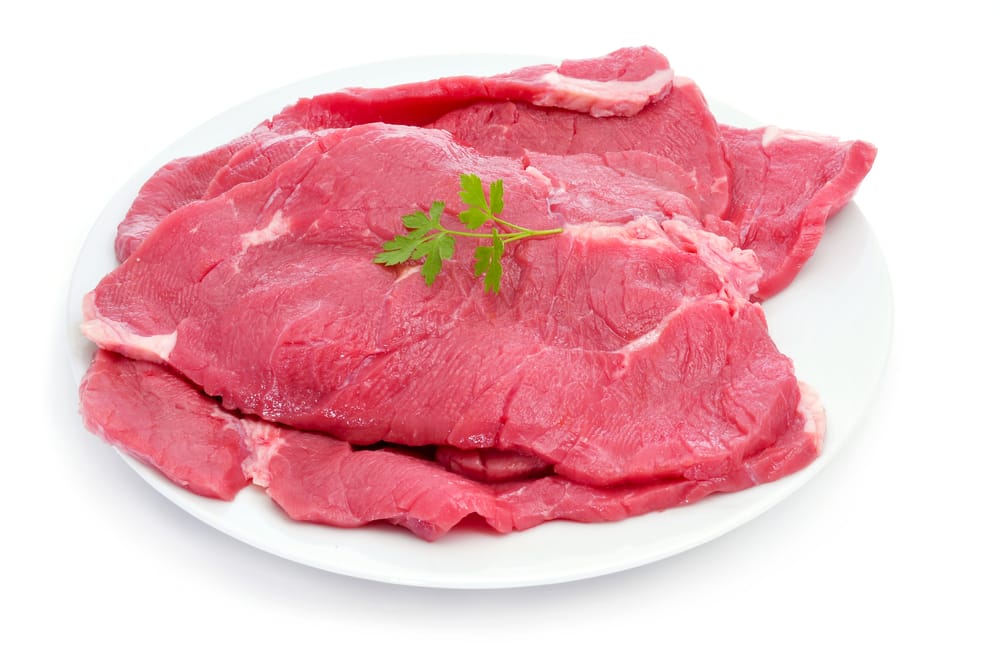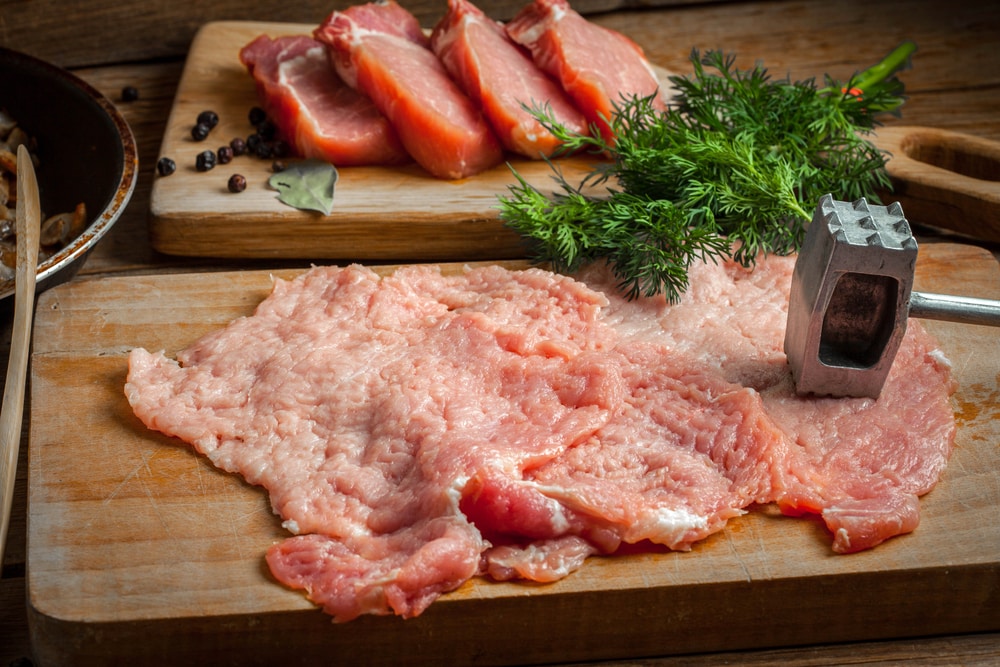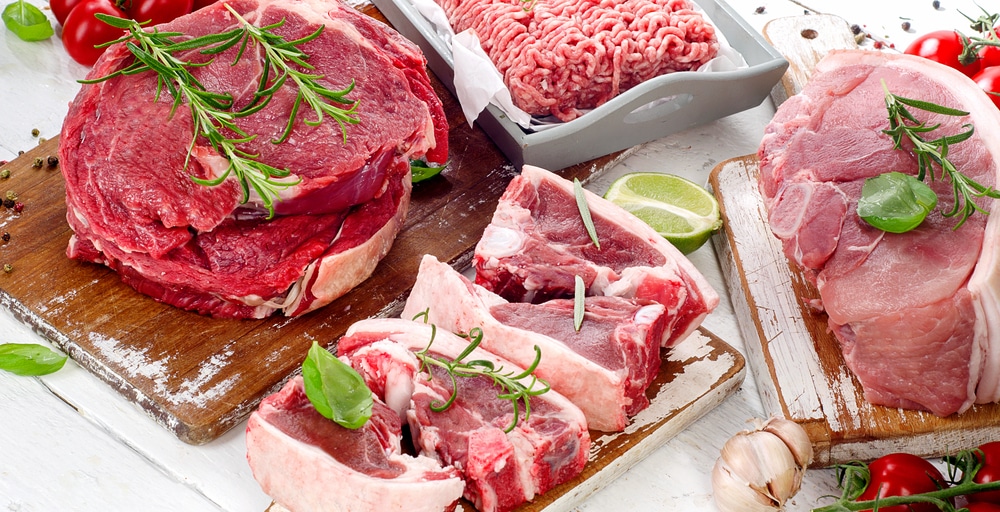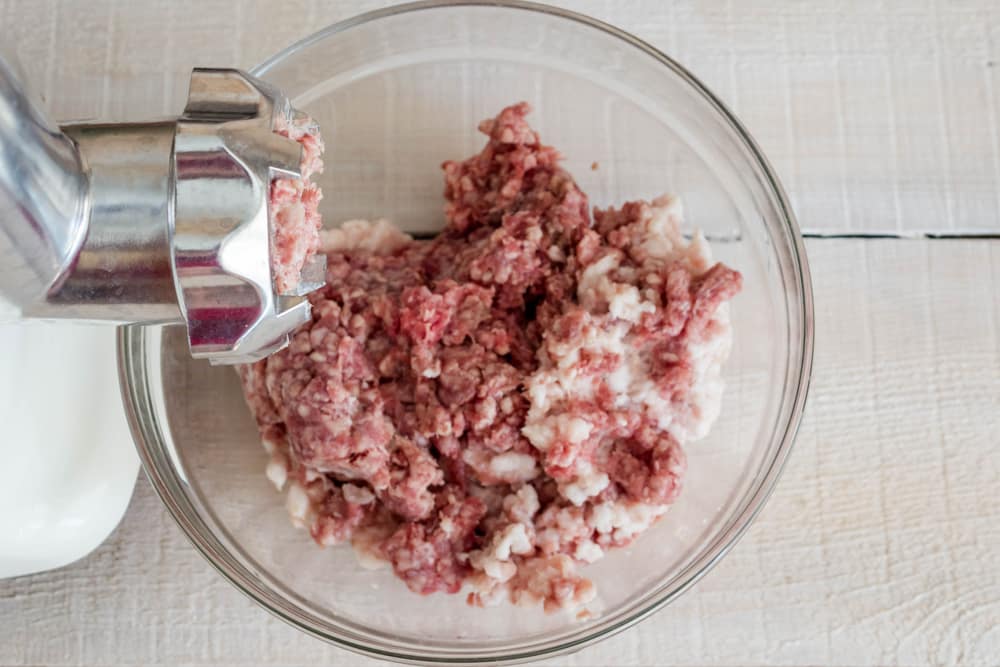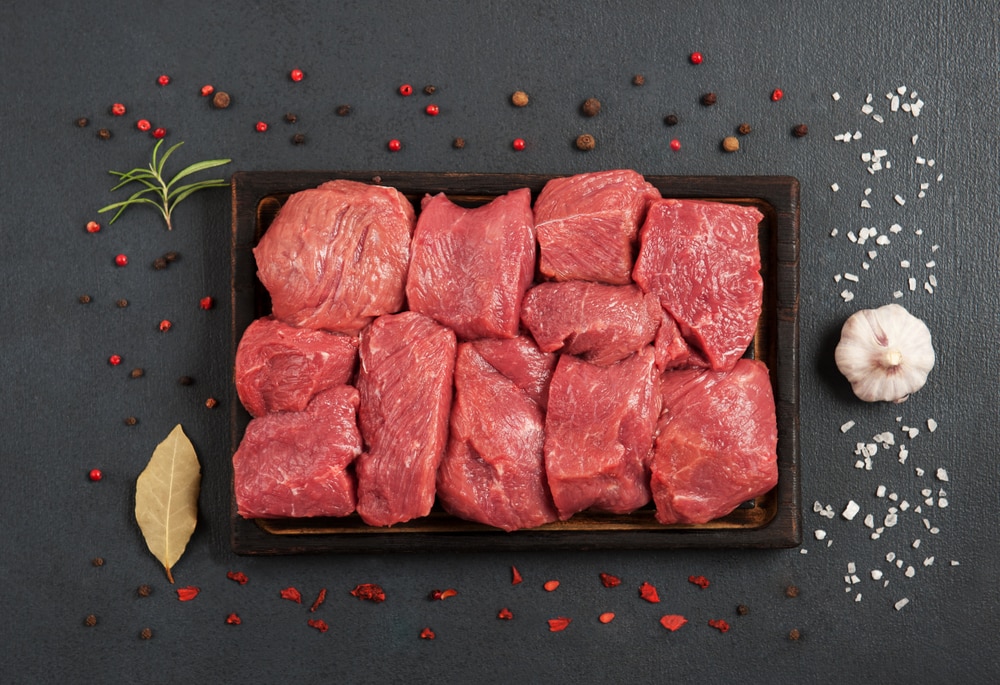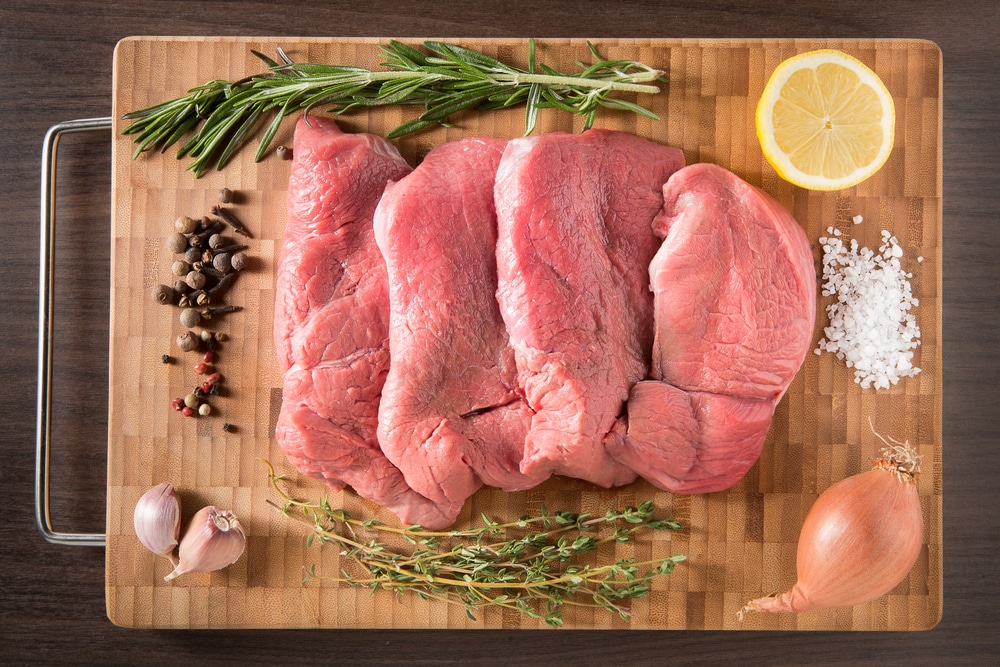
Calves are young cattle, and veal is meat obtained from slaughtering young baby cattle. Meat from calves, regardless of gender or breed, is classified as veal.
Let’s take a closer look at what veal is, how it’s obtained, and what you can expect in terms of price, texture, and taste.
What Is Veal?
Veal meat is obtained from calves that are butchered when they are anything between two hours and a month old.
Most veal is obtained from bull calves which may be slaughtered within hours of birth or two or three days later.
The slaughter during is variable but always under a month. Depending on the age of the calf, the carcass yields between 9 and 27 kilograms of meat, or 19 to 60 pounds.
Conventional cuts of beef are obtained from fully grown cattle granting more meat and, consequently, a lower price.
What Does Veal Taste Like?
Veal is more tender than beef, less beefy, and carries a flavor more akin to pork than beef itself. As a result, you’ll find veal used extensively throughout Italian and French cuisine.
It features across all types of famous, popular meals like sweetbread, Vitel tonne, Cotoletta Alla Milanese, Ossobuco Alla Milanese, veal fillet, Scaloppine, schnitzel, and many others.
Most of these dishes call for the veal to be fried, which is the most common method of cooking this delicacy.
The 6 Best Veal Substitutes
Whether it’s the exorbitant price tag, the animal cruelty scandals, or simply your palette that refuses to eat a piece of veal, don’t worry!
We’ve got the best veal substitutes coming up so that you can still follow your favorite recipes.
1. Beef
Depending upon the cut of meat, beef might drastically differ from veal. However, when considering its nutritional value, veal is not that different from beef.
For example, one hundred grams of veal contains 179 calories, 0.99 micrograms of vitamin B-12, 0.306 milligrams of vitamin B-6, and 3.37 milligrams of zinc.
In comparison, 100 grams of beef contains 170 calories, 2.28 micrograms of vitamin B-12, 0.238 milligrams of vitamin B-6, and 3.83 milligrams of zinc.
Calves who have lived for a year (12 months) or longer are considered fully grown cattle. As calves age, their meat goes from light pink to a vibrant red when fully matured.
Certain cuts of beef have stronger and lighter beefier tastes and a selection of textures from tough to tender.
You’ll find that beef cuts like fillet and sirloin are most comparable to veal in texture and taste. The flavor of beef fillet is particularly similar and the ideal veal substitute.
Sirloin will work, but the meaty, beefy taste is more prominent.
2. Pork
Beef comes from the same animal, but pork, of course, is an entirely different species. Despite the glaring difference, certain pork cuts taste very similar to calf cuts.
Most pork is considered a good veal substitute, carrying a mildly sweet flavor and a juicier body overall. Veal is normally slightly more tender than pork, but there are cuts that come close.
The majority of pork cuts are similar to veal in taste and texture, but many decide to pound them to guarantee tenderness.
If you do tenderize your pork, take great care when softening cuts like tenderloin, as you can destroy the meat completely (it’s super soft to start with). Pork belly, loin, sirloin, loin chops, and sirloin chops will all work.
However, pork rib and shoulder chops are much tougher and taste much more like pork than veal. If you’re looking for the ideal veal alternative, give pork escalope a try.
It’s the cutlet used by low to mid-range restaurants across Germany and Austria to make schnitzels. Another favorite substitute is pounded pork loin or tenderloin, which mimics Scallopini (veal cutlets) in every way.
The ideal veal substitute, pork tenderloin, is comparable to veal in nutrition as well.
A single average piece of cooked pork tenderloin grants 478 calories, a whopping 87 grams of protein, 12g fat, 40% of the daily intake recommended for potassium, and 125% of the DV of Vitamin B-6.
You also get in a healthy concentration of cobalamin at 31%, 24% of the DV of magnesium, 21% iron, and 2% calcium.
3. 50-50 Pork and Beef
A mixture of half ground pork and half ground beef gives mild flavor and tenderness that’s close to veal. You won’t be able to use this substitute in all recipes, but this is your best bet if you need ground veal.
Many commercially produced hamburger patties use this combination or varying quantities of ground pork added to ground beef to bring out flavor.
Not only does adding pork to your blend bring out complex flavor, enriching the beefiness, but the affordability of pork brings down the cost of your meal as well.
When looking at the nutrition, pork and beef bring a healthy balance that’s higher in fat than veal. A 4 oz serving of a 50-50 mix of ground pork and beef arrives at 290 calories, with 198 of those coming from fat.
Consuming a single serving grants 20 grams of protein, 18% of the daily value of iron, and 3% calcium while coming at the cost of 22 grams of fat, 8g of which are saturated.
4. Turkey
Turkey breast is one of the best substitutes for veal around. Go for boneless turkey breast if you have the option available.
The delicacy of the meat calls for a similar cooking technique to veal, and the availability of various thicknesses ensures all your recipes are covered.
Turkey is cheap, and if you want to save time, simply buy it cooked and pre-sliced from your nearest deli.
Turkey is the healthier option over red meats, arriving leaner than other alternatives.
A single 100 gram (3.5 oz) serving of turkey grants a massive 29 grams of protein, 239 mg potassium, 109 mg cholesterol, and just 7 grams of fat while occupying just 189 calories.
There’s also 30% of the DV of Vitamin B-6, 16% Cobalamin, 7% Magnesium, 3% Vitamin D, 6% Iron, and 1% Calcium.
5. Chicken
Just like turkey, chicken is a suitable alternative to veal in most cases. We recommend pounding your chicken breast until it’s well tenderized. Try the same thing with turkey if you find the cut a little too thick.
Pounded boneless chicken breasts work the best, but any cut will take the place of veal if it’s thinly sliced.
Many use turkey and chicken as veal substitutes as they’re the healthier option coming with the benefits of white meat and none of the drawbacks of red.
Chicken gives you 27 grams of protein, 223 mg potassium, and 14 grams of fat at the cost of 239 calories in a single 3.5 oz (100 g) serving.
You fulfill 20% of the DV of Vitamin B-6, 7% Iron, 3% Vitamin A, 5% Cobalamin, 5% Magnesium, and 1% Calcium.
6. Lamb, Goat, and Ox
Lamb, goat, and ox meat, no matter which cut, have a strong overpowering flavor. Most of these cuts are relatively less tender as well. If you really don’t have anything else available, these cuts will do.
Go for the softest, tenderest cut you can find, staying away from sinuous areas. However, the pungent taste is inescapable, leading to lamb, goat, and ox meat to be considered second-class veal substitutes.
Preparing Your Veal Substitute
The veal substitute you choose will determine how much handling and preparation it needs prior to cooking.
Most chefs recommend that you get out your flattening or tenderizing mallet and pound your veal alternative until it’s far thinner than its starting size.
Both turkey and chicken can be pounded to almost double their size, bringing the texture almost identical to veal.
What Is The Best Veal Substitute?
The best substitute for veal will be determined by whom you’re serving and what you’re cooking.
However, pork loin cuts emerge as one of the most popular options, delivering unbeatable affordability, juicy tenderness, and a taste that’s pretty close to veal.
Ultimately, it comes down to your personal taste and the meal you’ll be preparing. Not all our suggestions will be suited to the thickness that you need to pick carefully.
